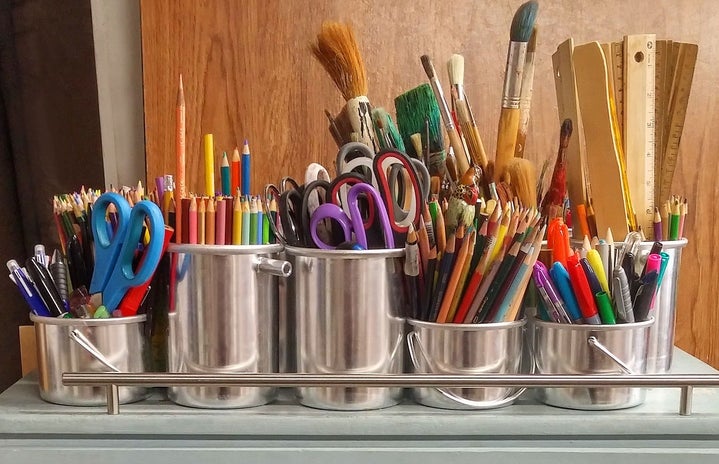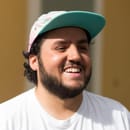With the internet being so easy to access, it has become easier for independent artists to find an audience and let their work be known. As a result, a variety of movements, collectives, and scenes have found a way to pave their path. The independent art scene in Puerto Rico is no different. Recently, many artists from a variety of disciplines have found platforms that have made it easier for them to share their work. In addition, small businesses such as Electroshock in Santurce and Rio Piedras, bars like Off The Wall in Mayaguez, book stores like La Casita Books and Gifts in Aguadilla, Libros AC in Santurce and Libros 787 online, and independent festivals like Feria de Libros Independientes y Alternativos and Tintero: Festival de Cómics y Arte Independiente de Puerto Rico have provided up-and-coming artists a space to display their talents. “Puerto Rican Women Killing It in the Independent Art Scene” is a series of interviews that provides a glimpse at some of the women who have recently gained recognition in the art scene. Though the artists are asked similar questions, some are asked queries surrounding their work, specifically.
What’s your name and what do you do in the arts?
My name is Clarissa Joaquin and I work full-time as an independent artist, using drawing and illustration in watercolor as my main preference. I am also a part time Tattoo Artist and Urban Artist. I am a resident artist of the Proyecto de Arte Urbano Contra el Cáncer. I am a manager and curator of the Festival de Arte Urbano in Arecibo, and recently I became part of the group of Acción Pictórica, hosting their art activities in the town of Arecibo.
What got you into the visual arts?
Basically I was born with it. Since I was a little girl I spent every day drawing and invented things. When I finished high school, I went to study something I did not like and my father told me I should go study arts because drawing was the only thing I did daily. I listened to him, went to study art at the age of 18, finished a BA in Education and Painting, and since then it is the only thing I do as professional work. Later I finished an MA in Museology, which made me start to create artistic educational activities and want to take the museum to the street.
What got you into tattoos?
A colleague convinced me that I should do tattoos, so I tried it and I liked it.
How did you develop your style?
Through different experiences in life, the constant search for changes and daily practice.
How has it evolved through the years?
Actually more than 90%; the technique in my work has been growing and improving. Working daily allows me to create and find different application techniques every day. Practice is essential for the work to improve. The realism in my drawings is getting better. As of today, I continue to understand and learn other things that help me create.
What are some of your influences and inspirations?
Artistically, I cannot identify specifically my influences, I can only say that every experience in my life and in the lives of other people greatly influences my work. The inspiration also comes from some unknown place in my brain as read or experienced. I am not likely inspired by other visual arts.
Is there any other form of art you wish to pursue? If so, what field and why?
Yes. I have always liked animation, special effects and makeup transformation. I love creating beings that “do not exist”.
What do you think about the current state of the arts in Puerto Rico?
It’s constantly up and down, although at the moment it is becoming more popular thanks to different events that are being held around the island. Fortunately, it is attracting new people who thought they could not appreciate the art because of how expensive it might be most of the times. Still, people are beginning to learn to appreciate and purchase art. Urban art and murals are the ones that are opening doors to many things right now. The downside is that the investment in art is not enough and elitist.
What do you think about the current state of the independent scene in Puerto Rico?
It moves well and is paying off. There are great events throughout the island and others are still being created. We are the ones who are raising all the arts in Puerto Rico. It is a little uphill, but we have many “fajonas”, women passionate in the arts and with the disposition to continue raising independent art.
If a young girl came up to you and said she wanted to be an artist, what would be your advice for her?
Actually, it happens often. First, I would offer my help so that she starts immediately. I would tell her that if she really wants to, she should fall in love with it and do it. To launch her art without fear, work hard and do not let the negative things that can be found along the way make her back off of what she is passionate about. I would also tell her to learn to collaborate with other artists and always look for ways to carry her message.
What is your biggest goal right now?
It might sound a little utopian, but there are utopies we should not abandon. My greatest wish is the union and change in the world through education and arts. Because of that, I work day by day to create that union and changes.
What do you seek to achieve with work?
Unite people for a common good. Continue growing with what I do. Change minds to change the world.
All of the pictures in this article were provided by Clarissa Joaquin


